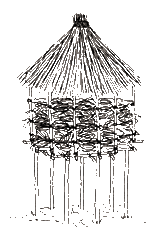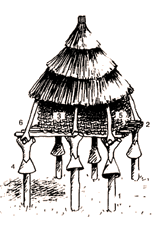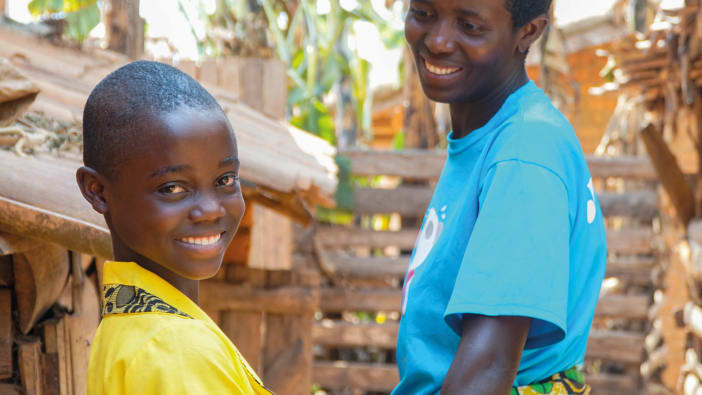Simple improvements to traditional granaries may reduce the loss of grains to pests and diseases without requiring financial outlay. A workshop was held in Mundri, Sudan to look at grain storage. Relevant teaching was first given about the main enemies of stored grain – mould, insects, rats and mice and the four main environmental factors affecting their multiplication – heat, moisture, air and dirt. New ideas and designs were then introduced and discussed. Finally, however, the participants made their own decisions about an improved design for them.
Traditional granary











